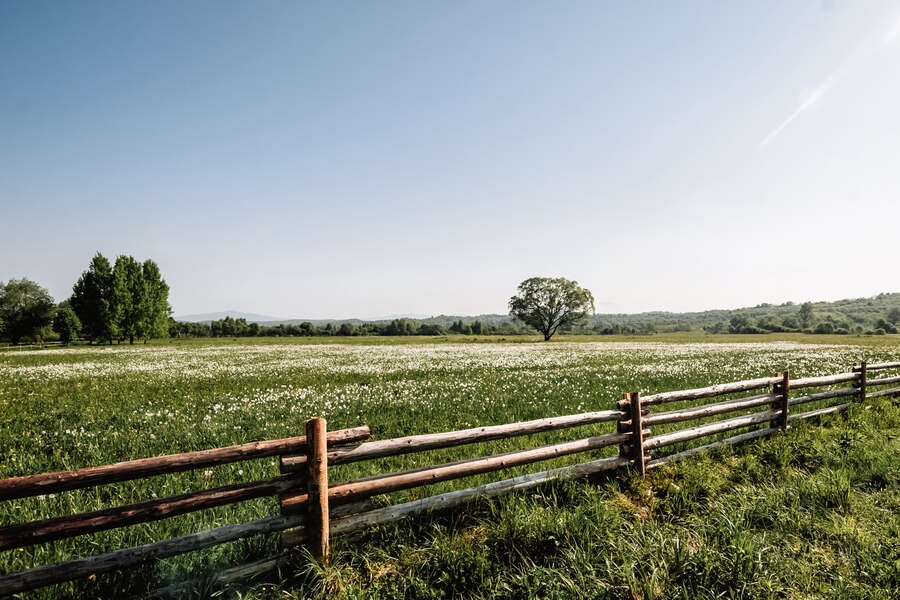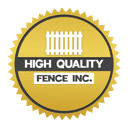Avoid Common Mistakes in Farm Fence Installation Manteca

Proper farm fence installation is crucial for maintaining security and productivity on your property. However, many landowners in Manteca make common mistakes that can lead to costly repairs and setbacks. From choosing the wrong materials to improper post spacing, these errors can compromise the effectiveness of your fencing system.
To ensure your farm fence installation Manteca is both effective and durable, it’s important to understand and avoid these pitfalls. This guide will highlight the most frequent mistakes and offer practical tips to help you achieve a secure and long-lasting fence.
Choosing the Right Materials for Durability
Selecting the right materials is fundamental for a fence that stands the test of time. For farm fences, durability is key as they need to withstand weather, wear, and the demands of livestock. Consider using high-quality wood treated to resist rot, or opt for metal options like galvanized steel for greater longevity. Vinyl fencing can be a maintenance-free choice, though it might come with a higher initial cost.
The climate in Manteca also plays a role; materials that fare well in dry, hot conditions are crucial. Weigh the pros and cons of each material, keeping in mind factors like cost, longevity, and maintenance needs to ensure you choose a fence that will remain effective and attractive for years to come.
Importance of Accurate Post Spacing
Accurate post spacing is essential for the strength and stability of your fence. Posts that are spaced too far apart can lead to sagging or leaning, while posts too close together can increase material costs unnecessarily. For most farm fences, spacing posts about 6 to 8 feet apart is a good rule of thumb, but this can vary depending on the type of fence and the materials used.
Proper spacing ensures that the fence can handle tension and pressure from livestock and weather conditions without compromising its structural integrity. Measuring carefully and using a string line or level can help maintain uniform spacing and a professional finish.
Avoiding Common Design Flaws
Design flaws can undermine the effectiveness of your fence, leading to issues that could have been easily avoided with careful planning. Common mistakes include inadequate height for containment, poor alignment, and insufficient space for gates. It’s crucial to design your fence with both functionality and aesthetics in mind, ensuring it meets your specific needs and complements your property.
Planning for future adjustments or expansions is also wise. A well-thought-out design will not only serve its intended purpose but also enhance the overall look of your farm, providing both practical and visual benefits.
Correct Techniques for Installing Fence Posts
Installing fence posts correctly is essential for a sturdy and reliable fence. Following proper techniques ensures that your posts are stable and can withstand various environmental stresses.
- Digging Adequate Holes: Ensure that holes are at least one-third of the post’s length. This depth provides the necessary stability and prevents the post from shifting. Wider holes allow for the addition of gravel or concrete for extra support.
- Using a Level: Frequently check that posts are level during installation. A level ensures that the posts are straight and aligned correctly, which helps maintain the fence’s overall stability and appearance.
- Setting Posts in Concrete: For added stability, set posts in concrete rather than just soil. Concrete provides a strong foundation that resists movement and helps prevent issues such as leaning or sagging.
- Allowing Concrete to Cure: Let the concrete cure fully before attaching fencing materials. This typically takes 24-48 hours. Curing time is crucial for ensuring that the posts remain secure and stable once the fence is fully installed.
- Treating Wooden Posts: If using wooden posts, apply a preservative to prevent rot and insect damage. Treatment will extend the life of your posts, making them more resilient against the elements and reducing the need for frequent replacements.
Adhering to these techniques will ensure your fence posts are properly installed, providing a strong and long-lasting foundation for your fence. This attention to detail will pay off with a durable and reliable fence.
How to Prevent Common Installation Errors
Avoiding common installation errors is key to a successful farm fence project. By being vigilant and prepared, you can sidestep costly mistakes and ensure a durable, effective fence.
Accurate Measurements
Always measure carefully before cutting or installing any materials. Mistakes in measurements can lead to poorly fitted posts or uneven panels, impacting both functionality and appearance. Use a tape measure and double-check your work to ensure accuracy.
Proper Post Depth
Posts need to be set deep enough to provide stability. Typically, they should be buried at least one-third of their length. Insufficient depth can cause posts to shift or lean over time, leading to structural issues.
Level Installation
Ensure that posts and fencing materials are level during installation. An uneven fence can create gaps, affect security, and lead to uneven wear on the materials. Use a level tool to keep everything aligned properly.
Consider Terrain Variations
Adapt your installation techniques to accommodate variations in the terrain. Uneven ground can affect post placement and fence alignment. Make adjustments as needed to maintain a consistent, functional fence line.
Selecting the Best Fence for Livestock
Choosing the best fence for livestock depends on the type of animals you have and their specific needs. For smaller animals, such as chickens or goats, a mesh or wire fence may be sufficient, while larger animals like cattle or horses require sturdier options like high-tensile wire or electric fencing.
The fence should be tall enough to prevent jumping and strong enough to resist pushing or leaning. Consider factors such as the fence’s visibility and the potential for animals to get tangled or injured. Ensuring the right type of fence will keep your livestock secure and reduce the risk of escape or injury.
Understanding Soil Conditions for Fencing
Soil conditions play a crucial role in the stability of your fence. Sandy or loose soil can cause posts to shift or sink over time, while clay-heavy soils may be too hard for proper post installation. It’s important to assess the soil type on your property before beginning installation.
For sandy soils, you might need to use deeper or larger posts and additional reinforcement, while clay soils may require special equipment for digging. Understanding and adapting to the soil conditions will help ensure a more stable and long-lasting fence, minimizing future maintenance and repairs.
Key Considerations for Gate Placement
Gate placement is crucial for optimizing accessibility and functionality on your property. Thoughtful planning ensures that gates are practical, secure, and enhance the overall layout of your fence.
- Strategic Location: Position gates where they provide easy access to frequently used areas, such as pastures or barns, to streamline movement and reduce travel time across your property.
- Appropriate Size: Choose gate dimensions that accommodate your needs, whether for vehicles, equipment, or livestock. Ensure the gate is wide enough to avoid congestion and potential damage.
- Sturdy Construction: Select high-quality materials and hardware for gates to ensure they withstand daily use and environmental factors. This helps maintain functionality and security over time.
- Visibility and Safety: Install gates in well-lit areas and consider their visibility from a distance to enhance safety. This helps prevent accidents and ensures gates are easy to spot.
- Proper Alignment: Ensure gates are aligned with the fence line and open smoothly. Proper alignment prevents misalignment issues and extends the lifespan of the gate and its components.
Careful consideration of gate placement can significantly enhance the efficiency and safety of your fencing system. Implement these tips to ensure your gates meet all functional and aesthetic needs.
How to Maintain Your Farm Fence
Regular maintenance is essential to keep your farm fence in top condition. Inspect your fence periodically for signs of damage, such as broken posts, loose wires, or rust. Promptly address any issues to prevent them from worsening. For wooden fences, check for rot and replace any compromised sections.
Metal fences should be treated for rust, and adjustments may be needed to tighten wires or fix sagging areas. Keeping vegetation trimmed away from the fence can also help prevent damage. A proactive maintenance routine will extend the life of your fence and keep it functioning effectively.
Tips for Proper Fence Alignment
Proper fence alignment is key to both functionality and appearance. Misaligned fences can create gaps or weak points, making them less effective and less attractive. To achieve straight alignment, use a string line or laser level during installation to mark the correct path for your fence. Regularly check alignment as you work, adjusting as needed to maintain a straight line. For longer fences, consider using a line level or staking out points to ensure consistent alignment. Taking the time to align your fence accurately will result in a more professional and reliable installation, enhancing both its performance and visual appeal.
Proper farm fence installation is crucial for ensuring both functionality and longevity. By avoiding common mistakes, choosing the right materials, and following best practices for post spacing and alignment, you can create a fence that stands up to the challenges of farm life. Regular maintenance and careful planning can further enhance your fence’s durability, ensuring it remains a valuable asset for years to come.
For expert assistance with your farm fence installation, contact High Quality Fence. Our team is ready to help you select the best materials and techniques for a durable and effective fence. Reach out to us at 1112 N. Main Street #171, Manteca, CA 95336, call 209-815-9015, or email info@highqualityfence.com to get started.

